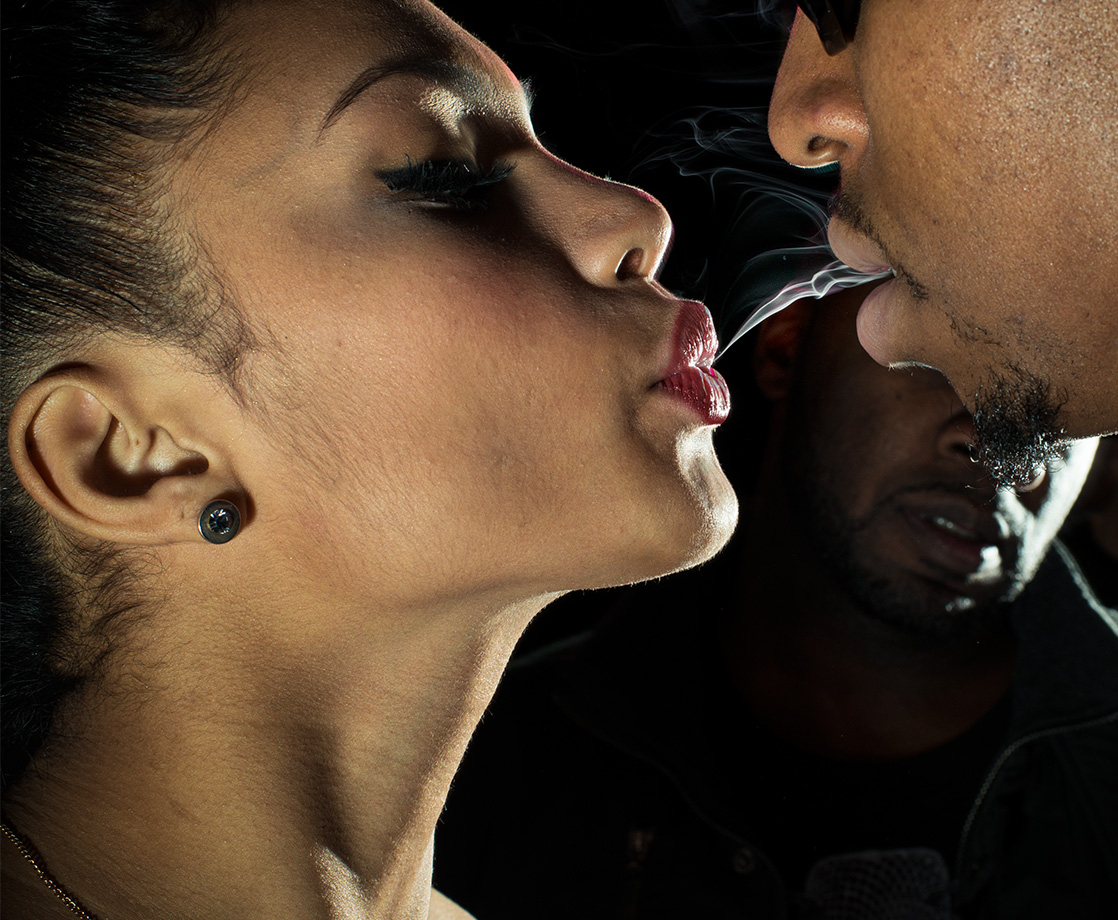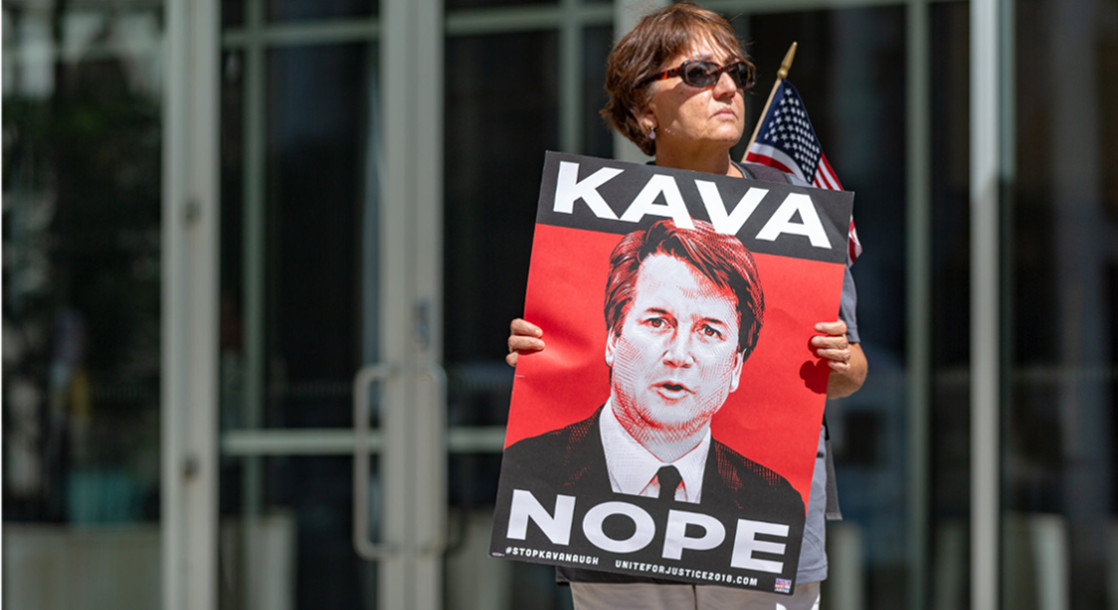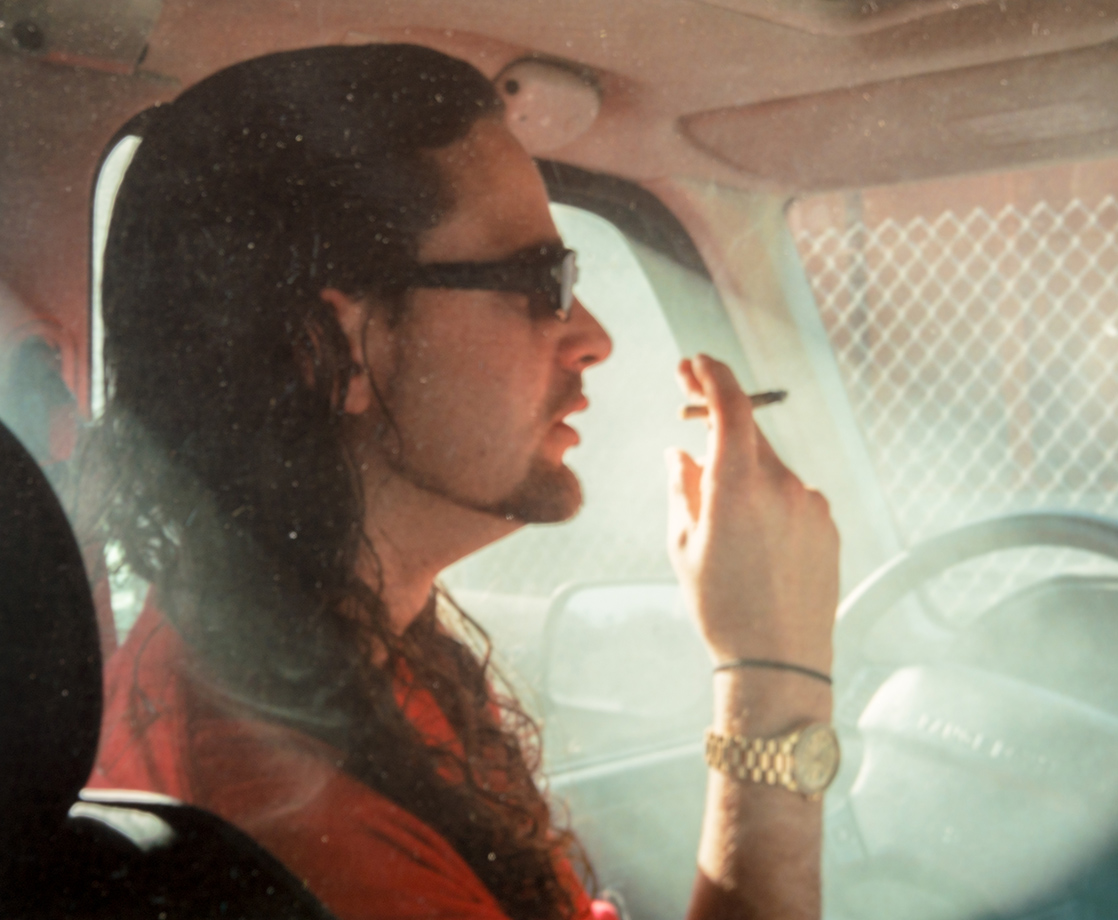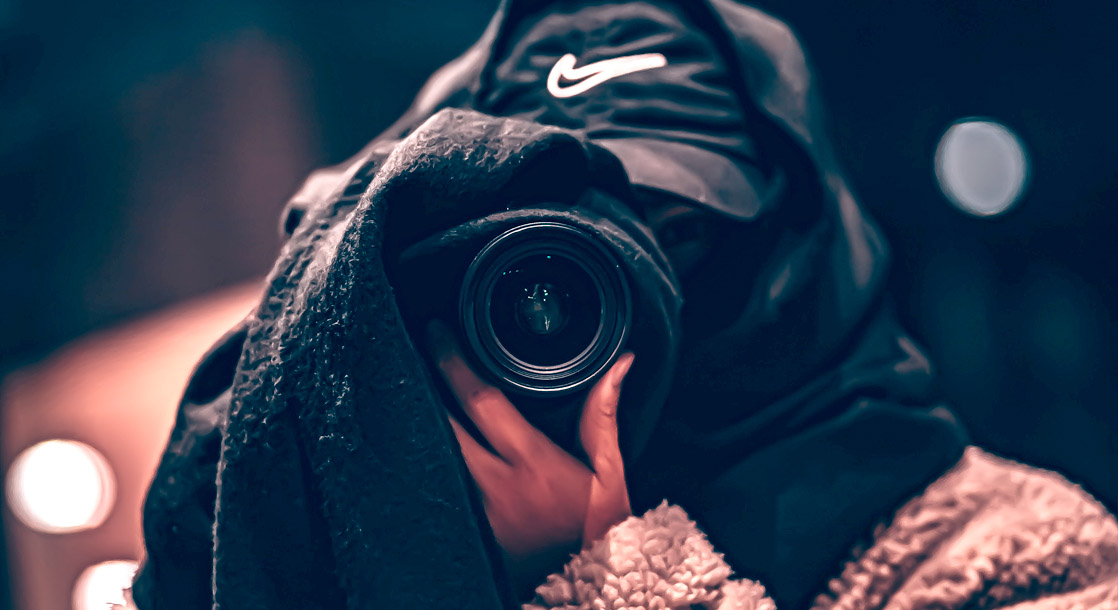All photos courtesy of Brian Finke and powerHouse Books
For as long as there have been rap videos, there have been women in rap videos. I don't mean female rappers — though early stars such as Queen Latifah, Salt 'N Pepa, and MC Lyte certainly produced memorable videos of their own — I mean models. These women typically appear as voiceless entities, vehicles for champagne pouring, money throwing, and, in at least one memorable instance, credit card swiping.
Commonly referred to as "video vixens" or "hip-hop honeys," and appearing in recurring features in publications such as XXL, Vibe, and Bossip, these models rarely get allotted as much spotlight as the artists that rap in the same videos. In his latest monograph, photographer Brian Finke makes said models his primary focus. Hip Hop Honeys (out March 27th via powerHouse Books) consists of snaps taken on set at various rap video shoots. The rappers in question, though, barely appear. Finke foregrounds the models and reduces everyone else present to a stray limb here and there, faces blocked by women in catsuits.
The book is somewhat of a continuation of Finke's previous monographs, which all focus on specific professions — mostly ones that don't get as much shine as those they appear alongside. After turning his lens on cheerleaders and flight attendants for past projects — as well as working heavily with publications such as The New York Times, The New Yorker, and National Geographic — he's spent the past few years trolling Tri-State area rap video shoots to capture the perfect shots of women who serve a crucial-but-underappreciated role in the music industry.

You may think of skimpy outfits, stacks of cash, and blunt smoke when you envision rap videos — and all of that's in Hip Hop Honeys — but Finke mostly focuses on less glamorous out-of-frame scenes: a woman with a t-shirt over her knees checking her phone, another kneeling with a pillow protecting her rear end from a pair of spiky heels. Also vital to the book's nuanced approach to rap culture is an introduction penned by music journalist Abigail Covington, who places the images in conversation with stereotypes, feminism, and some of the actual models themselves, who she interviewed while on-set with Finke.
Curious to find out what went into the making of Hip Hop Honeys, MERRY JANE hopped on the phone with the photographer to discuss his history of picking less-than-obvious subject matter, the differences between high- and low-budget rap shoots, and how his new body of work is about much more than simply bodies.

MERRY JANE: Your books seem to focus on specific professions — cheerleaders, flight attendants, marshals, and now rap video girls — what is it about this format that appeals to you?
Brian Finke: I'm very straightforward and simple about picking one subject and obsessing about it for a period of time, usually several years. Different things come in different ways.
With cheerleaders, I had seen the movie Bring It On; I'm from Texas and both of my sisters were cheerleaders. With flight attendants, that was around the time when I started working a lot on assignment for magazines, flying around, and became interested in them. With U.S. marshals, I reconnected with a buddy of mine I had gone to high school with who had become a U.S. marshal in Texas, and through him started to photograph some of his fellow marshals.
With the hip-hop thing, I was at a photo festival in Italy, and an editor that I work with at an Italian magazine told me about this BBC documentary she had seen entitled Video Vixens, and she thought the subject matter would be great for me in continuation of all the other things I had been photographing. At this point, it just seems like a lot of things present themselves to me, either through friends or colleagues.

Is there something specific about professions or jobs that appeal to you as a focus?
I like subjects that deal with contemporary culture, and it's a nice way of examining that through workplaces. A lot of my personal projects and assignments seem to veer in that direction. The hip-hop book is a nice continuation of that.
Have you ever had any other assignments related to hip-hop?
This was definitely my first entrée into it. I like that about my work assignments, just learning about it as I go and photographing it that way. It's like showing up with new eyes.

How did you go about getting access to the video shoots?
I got access to this project via a casting director here in New York. I started reaching out to a bunch of photo editors and producers I'd worked with, and then through lots of emails and many months later, I connected with one casting director, and the next day he was like, 'Show up at this cigar bar in Harlem where we're shooting a video.' And that's pretty much how it started.
I continued working through him with the models he represented and the videos they worked on, anywhere from an A-list artist to B and C-list ones. All of it was great. The high-end stuff was wonderful, with all the costuming and the elaborate sets and the environments. And then the B and C-level stuff was great, even if it was just in a hotel room on Park Avenue. Just being in there while it was all going on was cool. They all afforded a lot of unique opportunities for shooting.

Were there any specific artists or directors whose sets you wanted to photograph, or was it more about getting a well-rounded look at the actresses in the industry?
We originally had the idea to branch out to other cities and travel with it, and then we just ended up shooting all of it locally in the New York City area.
What's the biggest difference between an A and a C-list rap video shoot?
It's pretty much what you'd expect. With bigger budgets, it was more comfortable, and with the smaller ones, it was more low-key and casual. The higher-end stuff was like hanging out at mansions in New Jersey, and for the lower-end stuff, it'd maybe be a hotel or a small studio in Brooklyn. Regardless of whatever level it was, it involved everyone hanging out and being on their phones and hours and hours of waiting for everything to get started. With regards to the models, it wasn't really one type of model sent for one level of videos, it was more about what the director or artist was looking for.

Is the cover image taken from an actual rap video? Was there really a woman walking around the set with a chain that spelled out Hip Hop Honeys?
No, that was something I worked on with an art director, and I photographed a model specifically for the cover. All of the other pictures were taken documentary style, and that was one image that was specifically produced for the cover. It was more of a creative/aesthetic choice, wanting to incorporate all of the text into the photo, kind of like an album cover. I just wanted to keep it simple, without my name or anything.
Was anyone apprehensive or curious as to why you photographing them?
I was very straightforward when I showed up. The casting director would let the director know, and then I would just introduce myself to the models. Everyone's already there to be seen and be photographed, so I was just one more layer of that.

On the rare occasions that rappers do appear in your photos, their faces are covered or they're almost entirely out of the frame. Did you make a concerted effort to not foreground them?
Yeah, very much so. I wanted it to be about the models. I've done similar things in previous projects. For example, for the flight attendant book, I was photographing some interactions with the passengers, and more of the extraneous people there, and it became distracting. I wanted to focus on the people that the project is about. It was a conscious decision to keep it focused on the models and then just to give hints of these other characters that were also present. It creates a little ambiguity and curiosity with how things are framed.
Did you set out to dispel any misconceptions or negative stereotypes about these women?
I wanted the pictures to be about the women and for them to look amazing and empowered. I showed the models the images as much as possible and they loved them. I wanted to work with Abigail [Covington] and for her to interview the models in order to give them a voice and bring in their own personal experiences to share.

What made you choose Abigail to write the introduction?
I became aware of music pieces she had written online, and I just reached out to her myself. She was excited to be involved with the project, and I thought having her there was a very important part of it. She did a great job with the introduction — it added a lot of necessary context.
Who are the models, generally speaking? Age, other professions, etc? Does the job tend to attract women from a variety of backgrounds?
A lot of them do different types of modeling, or are dancers or club promoters. Many of them viewed being in videos as a method of promotion, and some are much more on top of making the most out of it than others are.

What ended up being the most unexpected part of this project for you?
So much of what appears in rap videos is fake. The money, the guns, you know. So much of it is not real, but it's always present at video shoots. That was interesting to me.
What about the weed, is that fake?
I doubt that. I hope not. That's real, good point.
'Hip Hop Honeys' is out March 27th via powerHouse Books. Pre-order it here.
A reception and book signing will take place on March 29th at the ClampArt gallery in New York, where Finke's photos will also be on display until May 12th. For more information, visit ClampArt's website.
Follow Patrick Lyons on Twitter.











